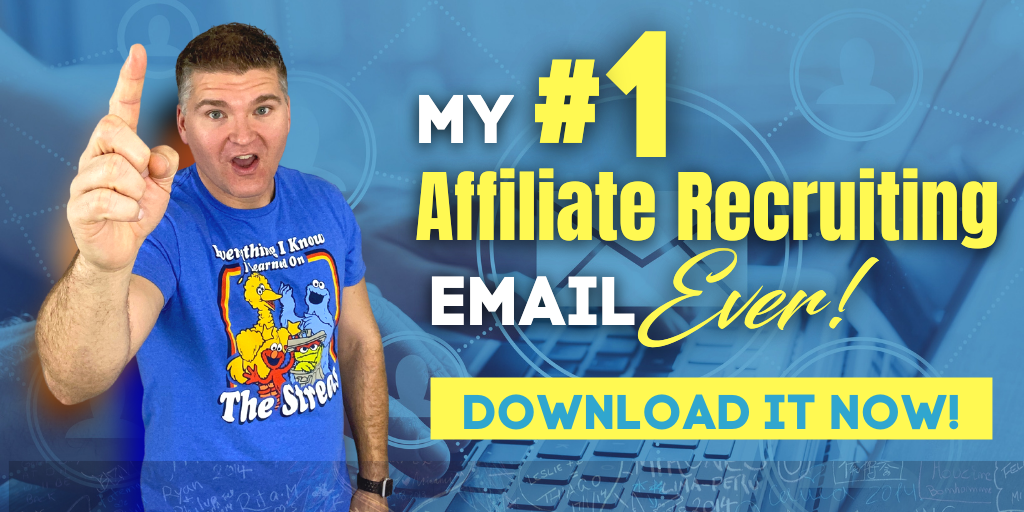What the heck does an affiliate manager do all day? I get asked that a lot. And for good reason…it’s a bit of a mystery to most people. So today, I’ll take you behind the scenes on what a typical day in the life of an affiliate manager really looks like.
Click Here for The Written Transcript of This Episode
Get my #1 affiliate recruiting email (the one I’ve personally used to recruit thousands of affiliates in dozens of niches). Grab your copy here!
LINKS MENTIONED IN THIS EPISODE
Find Your First 100 Affiliates
Text me at 260-217-4619
Don’t Miss An Episode – Subscribe Below
Previous Episodes of The Affiliate Guy
10 Lessons I Learned Launching a Bestselling Book
Listener Q&A: Finding Affiliates, What’s Working in Affiliate Recruiting, Email Templates, and More
How to Create Recurring Affiliate Revenue Promoting Membership Sites
Behind-the-Scenes on Our Affiliate Promotion for Product Launch Formula
Day in the Life of an Affiliate Manager
What the heck does an affiliate manager do all day?
If I had a nickel for every time someone asked that, I’d probably have like $14.35. But seriously though, I get asked that a lot, and for good reason. It’s a bit of a mystery to most people.
So today I’ll take you behind the scenes on what a typical day in the life of an affiliate manager really looks like. Let’s go.
So the title of this podcast is a Day in the Life of an Affiliate Manager and here’s the thing before we get into it.
There is no typical day. It depends on what’s going on. There’s no template for every day.
In a lot of jobs, there’s a template. Your Monday is going to look a lot like your Tuesday, your Tuesday is going to look a lot like your Fridays, and the first week of the year is going to look a lot like the middle of June, and the middle of June is going to look like the middle of November.
That’s not the case with affiliate managers, though. We could be in the middle of a massive launch, and those days are crazy. We’ll talk about that.
It could be a big promo, it could be four months before a promo, it could be three days before a small promo.
If you’re managing multiple programs like our affiliate managers do, you could be in the middle of a huge launch with one.
You could be five months out from a big launch with another. You could have an evergreen program, and you could have another program that has a big challenge in two weeks or a big webinar next week.
So it really depends. Your day can vary greatly depending upon the industry, the company, the time of year, what’s going on, all those reasons.
The season, when I was in retail, when I worked with Shutterfly, for example, my schedule from late October through right before Christmas was so vastly different than it was in July.
My work schedule the week before Mother’s Day and Father’s Day and during graduation season, much busier than it was in the middle of September.
However, there are a few core tasks that are typically part of an affiliate manager’s daily routine and what I want to do is take a little bit closer look at what a typical day might look like.
So I’m going to take a look at an evergreen program. So we’re going to look at what it’s like when you’ve got a program that’s basically 24/365.
And I’m going to look at it like you’re in the middle of a medium sized promotion. So not this huge launch where you’re working like 15, 16 hours a day. Not a slow day, not a day where there’s nothing going on at all.
Something kind of in the middle to give you perspective on what a typical, if there is no such thing, what a typical day looks like. Now, a few things that are central to how I work and how I recommend most work.
If you are ready to take your business to the next level and start an affiliate program, start with my free report, Your First 100 Affiliates. This report takes nearly two decades of experience, trial and error, and lessons learned about finding top affiliates in nearly every conceivable niche and puts them all into one report. Grab your copy here!
These are considering that our affiliate managers so I’m doing this from my perspective and from our affiliate managers, our agency here at Matt McWilliams Consulting, these are the things that are central to us.
Number one, they work from home.
So if you’re not working from home, you’re working in an office. It can be a little bit different.
Number two, we offer 100% flex schedule.
I don’t care when you work. I know my work schedule. I think I shared this before, but I work for a few hours in the morning, then I take time off in the late morning to very early afternoon.
We have a team meeting at twelve. So actually I’ve shifted this a little bit. It’s more just late morning now.
That’s when I get in my exercise and typically I usually have breakfast about 1145 in the morning.
I’m kind of weird, I don’t eat first thing in the morning and so I do that and then I have team meetings and some other calls.
Then I typically will take another little break in the early afternoon, what you call 2:30, I’ll take about a 30 to 45 minutes break then, that’s when I typically do like my studying any courses I want to be going through or reading that. I want to do that’s when I do it.
And then I work for another few hours before we have soccer practice, typically, and whatever else we have going on in the late afternoon, early evening.
So we have 100% flex schedule. Like, I can work that. I work roughly 8 hours, eight and a half hours a day, five days a week.
But I work those eight and a half hours over the course of like 11 hours. It’s a very unique schedule.
We have other people that get up and work from like five to nine and then they work again from like twelve to four.
We have other people who work nights. I see work done, like I’ll get in the morning and they’ve checked off stuff in Asana and it reports it to me.
Asana is our project manager software and it’s like, oh, that person was working at 1130 last night.
We have people in different time zones. We have people around the world. We have people in 4 countries, two continents.
Yeah, two continents. Canada is not in a different continent. We have people all over the world, though.
We have probably a higher percentage of homeschoolers, or they have other home based responsibilities.
They have other things going on in the home. They’ve got kids at home or kid at home, or they’re the primary housekeeper. So to speak in the home. So they have other responsibilities like that.
We have people who like to cook and so sometimes they take an hour and a half off in the middle of the day and they make a meal.
They make like a gourmet meal for lunch. I usually have leftovers. I usually have like salad and leftovers for lunch.
I don’t make gourmet meals even though I like to cook because I don’t want to take the time to do that. But sometimes they do.
They want to have a life outside of work and they want to crush their goals. They want to kill it for our clients, those are the things that are central to us.
So you have to keep that in mind as I talk about this typical day, you have to keep those things in mind.
So if you work from an office and you have a nine to five schedule and things like that, your life is going to be a little bit different.
We have core values, two of our core values for example, we always over deliver so we give our clients, our customers 10X value.
We always take the one extra step to ensure that people feel amazing in their interactions with us.
For us it’s not about just customer retention or loyalty, it’s the driving force behind everything we do.
So we work hard and we do what’s needed but we also ruthlessly protect our downtime. That is a core value for us.
We want people we are purposeful, it says we are purposeful about giving our team the rest and rejuvenation they need.
Some days we work nights a couple of weeks a year. You’ll have to work a weekend with us because there’s a big launch going on but we choose to do that.
We don’t work weekends because well, I planned poorly as a leader and now you got to work the weekend.
We want people to take care of their health, their mental health, their physical health, their relationships so they can do their best work.
We really encourage them, like I said, to divide up their day to work in two to three hour bursts with a couple of breaks to recharge to batch their works.
We’re going to do creative work for 3 hours, then we’re going to do calls, then we’re going to do the more mindless things like checking email and stuff later in the day.
We encourage them to get exercise and time outside and to eat healthy and work when they’re at their best.
So if they’re at their best from the bug crack of dawn, if they’re getting up at 4:30 and working from five to nine means we’re going to get their best 4 hours. Do it. Do it.
So here’s the whole look here real quick. We’re going to get to that middle kind of that middle of the road evergreen program.
But when I was doing more affiliate management of my own now we have an agency, and I spend more time running the agency and doing things like this podcast and I do actual affiliate management.
But when I was a full time affiliate manager, my day typically looked like what I described earlier, 3 hours of work like 7-10 exercise, breakfast, get ready from 10-12, then I work from like 12-2:30, take an hour break, work from 3:30-6.
In a big launch, it was more like get up a little bit earlier. So I work from like 6:30 to 8:30 or 9. Then I would exercise.
Then I’d do a quick check in because things might have happened in that hour and when you’re in a big launch, speed is of the essence, right?
So I would do some quick work. Then I would get ready and eat breakfast. Then I would work for a couple of hours, would be at like 02:00. I take my breaks are shorter. Instead of an hour break, I take like a 30 minutes break.
And that’s why I always made sure that when we were in a big launch, especially if it was like one of those three week launches that on Sundays I batch cooked so that all I had to do during the week was reheat stuff, and then we could enjoy the time together as a family eating.
Then I take a quick break and I work to like 5:30. Then I have time for family. Then I’d do a quick check in from like 6:30 to seven. Then I’d do dinner and family time for seven to nine. Then from like nine to 1030, I’d work shorter breaks, making sure I’m on top of things all day.
So what exactly does an affiliate manager do during those times?
Well, there’s a pretty equal divide between creative work, relationship works, and analytics work.
Now, again, for this example, I’m not talking about a massive launch or a regular, just kind of average day when nothing’s going on.
This is a middle of the road example involving a medium sized promotion in an Evergreen program.
So you’re going to ramp up, but you’re not going all out for like three, four weeks.
What does this look like?
Well, in the morning for me, again, I work like seven to ten the night before, I plan my major tasks for the day.
But first thing when we’re in a promotion, first thing is I’m going to respond to overnight messages.
Now, in a typical day, I’m not going to spend my first few hours responding to things from overnight.
But when we’re in the middle of a promotion, this would apply to a launch as well.
Speed becomes important. So I’m going to respond to email, Skype, text, or whatever else you’re using for messaging.
Need help activating your affiliates? Use my proven email templates for getting inactive affiliates in the game and making sales! Get them here!
I’m going to go most recent to oldest. The oldest are typically there might be from 11:00 the night before. They’re West Coast people, they’re Asia, they’re not even up yet, so I don’t need to respond to them.
So I get to the newest ones first. Somebody that they might be in Europe and it’s noon and they just emailed me.
There’s a big difference between a ten minute reply and a two hour reply. There’s not so much of a difference between a two hour reply and a six or seven or eight hour reply.
So I’m going to do that. I’m going to respond to message. I’m going to send the blast email for the day.
I usually write it the day before, the late afternoon, night before, and then I make any tweaks the morning of. I want to get this out by 08:00 a.m..
This is like, “Hey, today’s, what’s going on in the promo today’s the webinar. Make sure you email now” and again at 01:00 p.m., an hour before the webinar. “Here’s your links, here’s your swipe, copy, et cetera.”
So I want to make sure I do those things specifically for the promotion.
First thing communication.
Usually that takes me about an hour to respond to emails, to send that blast email.
Sometimes I’ll respond to the most immediate emails, and then if that takes me a little bit longer than it normally does, I’ll send the blast email and then come back and respond to other messages in a little bit later, like 08:00 or so.
I want to approve any affiliates, get them what they need during a major promo.
I’m not doing a lot of affiliate recruiting, but we’ll have some people come to us, hey, they might respond to a message from three weeks ago, or they’ll say, “Hey, my friend is promoting and they recommended you, blah, blah, blah, or I saw this promotion and I want to be a part of it.” So I want to make sure I get them approved.
Because, again, let’s just say it’s day two of a ten day promo, speed is important. If I wait till tomorrow to improve them, that’s a whole day, an entire day.
Like they’re fired up. I want to get them approved.
Like, “Hey, you’re approved. Here’s your link, here’s your swipe copy. Boom, boom, boom, you’re ready to go.”
So that usually takes on a normal day. Then I want to update stats. This might be for your client or for your boss, whatever it is, just for your own good.
Like who’s doing what, who’s sent a lot of leads overnight, who’s made a lot of sales?
If you’re in the sales portion, what’s going on stats wise, how are things converting?
Are there opportunities you want to check for opportunities?
Like this person, it’s day five of the launch, this person sent 400 leads the first day.
And here we are, four days later and there are 472 leads, that’s an opportunity to reach out to them and say, what’s going on?
You started off great, but you’ve slowed down. How can we help?
What are the opportunities with your inactive affiliates?
We’re going to talk in the next episode about how to turn your inactive affiliates into your best partners.
So I always say this the end, but make sure you hit subscribe so you don’t miss this one.
How do we work with those inactive affiliates?
Well, how do you know if they’re inactive if you don’t check every day?
So especially like day three, day four of a promo, you need to be checking like, who’s not promoted, who said they were going to promote but they haven’t yet, and reach out to them. We’ll talk about that in the next episode.
What’s working and what’s not?
We need to know that, oh, we announced this new promotion yesterday or this new contest and sales did not increase. That’s not working. What do we need to do differently?
So that takes me through roughly 09:00 or so about the two hour mark. I’ll typically then have a morning stand up meeting with the client.
Again, this could be with your boss or your team. We’ll do that with the client for about 10-12 minutes.
Then we’ll do a quick meeting with the team about 10-12 minutes. I’m now at about the two and a half hour, a little bit under mark.
I’ll then update the partner group. If we have a Facebook group with leaderboards, any major updates, anything like that, that needs to be updated and then the last thing I’ll do is I’ll reply to some more messages.
Again, I’ve been approving affiliates, checking stats. It’s only been a couple of hours, but again, in a promo, a couple of hours can be a lifetime.
So I want to make sure I check in one last time before I take a break. So then I’m going to take my break.
Typically, I’m going to do a workout, eat some quick breakfast and again, I’ve usually prep that when there’s a big promotion.
I prep that the week before or the Sunday before. I’m going to take a quick shower, shave and all that fun stuff. Get ready and now we’re about twelve.
I’m immediately going to check my messages. Again, immediately going to check my messages.
This time typically is when I focus on the inactive affiliates.
I’ve done the stats before. I’ve identified who’s inactive. Now I want to activate them and that’s what the next episode, like I mentioned, is all about.
So around 1230 to 01:00, I’m going to spend 30, 40 minutes just focusing on the inactives, reaching out to them to get them active.
I’ll typically have any strategy calls during this time. I try to book strategy calls between one and 2:30 if I can. If that doesn’t work, I’ll have some a little bit later in the day.
I try not to do them in the morning just because there’s so much else going on. But I’ll troubleshoot with them, help them plan things like that if I’m working with other clients.
So for those of you like our team, our typical affiliate manager, we do it a little bit differently, we do it in teams, so they might manage six or seven at a time combined between the two of them.
So we manage it a little bit differently. But let’s say you’re managing three.
This is the time, once I’ve responded to all the messages, et cetera, I’ll spend some time doing my other client work again, I’ve got a medium sized promotion, not a massive huge promo going on, but I’ll spend at least 30 to 45 minutes in this range working on other client stuff.
And then I’ll respond to some last messages, take a quick break, come back about 3:30. Again, check messages right away.
Usually this is when I have a lot of calls. Like I mentioned, I’ll check stats again, just see where things stand.
Is there anything happened? It’s been, what, 8 hours?
I’m not obsessed with stats, but I’m going to check who’s mailed what’s going on?
Has anybody promoted this afternoon, we want to update the partner group with leaderboards and any other major updates, time permitting in this stage this is when I’ll do some future focused work, such as affiliate recruiting or studying trends.
I might catch up on a little bit of, like I mentioned earlier, my study time, if I have time, if I’m working with other clients, this is where I’ll spend 30 to 45 minutes on the other client work.
So how that works is if you have exactly an eight hour day and you’re working with three clients, and again, this works out well.
We got about usually we do seven clients per two person teams. You got three and a half.
In a typical day, each affiliate manager will spend an hour to 2 hours on each client, more like 45 minutes to an hour and a half on each client.
But throughout the year, there are different times where they will now spend 4 or 5 hours on one client for two weeks.
And so that means they only have 3, 4 hours for all the other clients and we manage that in a few different ways.
The first is we might say, all right, this person, we got two people on the team.
Person number one, they’re going to spend basically full time on the one client, and they’re going to go all in on that one client.
They are in charge of nothing but that one client for that promotion, and the other person is going to take over all six for those two weeks. Okay, that’s one way we do it.
The other way is the workloads are still divided, and each of them is going to spend 3 or 4 hours per day on the one and then 3 to 5 hours on the others combined.
So we don’t just abandon our other clients. Of course, that would be ridiculous.
And it ebbs and flows because those are not fair to other clients. But at some point, for the other client, it’s going to be reversed.
Their time is going to be ramped up. They’re going to get the four, five, 6 7 10 hours a day of attention.
So most of what happens in a medium promo is just keeping up with everything and everything is fairly urgent.
Now, during the slower times when there’s no major promos, I’ll spend more of my work day keeping up with industry news and trends, Learning, education.
It’s underrated, but important. It’s easy to let up on education. This is why as a company, we’ve built in learning time.
So at least 1 hour a week, most weeks, we have committed time to learning.
Now, we meet for, let’s say about 30 to 35 weeks a year. We meet for an hour to talk about what we’ve been learning.
So we’ll read a book together for five or six weeks, and then typically we’ll take like two weeks off where we’re not doing that.
And then we’ll go through a course together for maybe eight weeks and then we’ll take two, three weeks off.
And then we’ll read a book together for three weeks and take a couple of weeks off and so on and so forth. That’s what we do.
Now you think, well, that means you’re spending an hour a week meeting to discuss it and share your takeaways and lessons and compile those so we can put them into action.
Because like, “Oh, that was a good takeaway, or, that was a good quote.” Well, what did you do with it? Nothing.
So we want to make sure that we’re actually taking action.
You’re meeting for an hour, but you’re also studying for an an hour and a half.
So we’re spending two and a half hours probably on average learning, studying 35 weeks a year.
So whatever that math is on that, we’ll just call that 75, 80 hours we’re spending.
In my free report, 75 Powerful Lead Magnets, I show you exactly what types of lead magnets actually convert and lead to explosive list growth. Grab your copy here!
On top of whatever they’re doing on their own. This is just what we have. Like, we built this into as a company.
One of our core values is we are constantly learning. So we are constantly learning.
We’re reading a book as I’m recording this, we’re reading a book by a friend of mine about affiliate management. I am 220 some odd pages and I haven’t learned a thing. That’s fine.
I’ve been reminded of some stuff, I’ve taken some notes. It’s caused me to think about a few things. So it’s been worth the three and a half hours, 3 hours I’ve spent reading. It’s been worth it to me because of what will happen in our business.
But there are things in that book, because I’ve been doing this for 18 years that to me are like, well, duh and I never even thought to teach them to our team.
And our team’s reading the book going, oh my goodness, I never knew that. It’s like affiliate management One on One.
Well, part of the problem is when I taught them a lot of the One on One stuff, but I skipped some of it because I didn’t think like, in my brain again, having done something for 18 years, the curse of knowledge, right?
I’m thinking, well, they know that, or I just don’t even think about that. So I go from like 101 to 204.
Imagine high school, I give them like half the freshman courses, two thirds of the sophomore courses, and I give them all the junior and senior year stuff.
Well, they’re missing some of the foundation, so this book is really helping them. So I’ll spend more time learning when things aren’t as busy.
Recruiting affiliates is our biggest thing, 70, 75% of our time during slower times is spent recruiting affiliates, Tons of calls with prospective affiliates, tons of emails and other messages with them.
Relationship building, planning, future promos. We’re planning those future promos.
So we looked at the medium again, when things are a little bit slower, more time learning, more time relationship building and recruiting during big launches.
I mentioned it earlier with the medium sized promo. But speed is everything. Speed is absolutely everything. Perfection has to go out the window.
One of our core values is that we do the things that scare us.
So we talk about the 80 20 rule and the motto “Done is better than perfect.”
“The wrong decision is better than no decision.” And so what that means is speed is important.
I’d rather you reply to an email in 17 minutes, reply to a text message in 30 minutes, than wait 3 hours to try to get the perfect answer.
If you really have to get a more perfect answer because this is critical, then you reply and say, I’m working on it, or I should have an answer for you in the next couple of hours.
During a big, big launch, you’re more reactive and the proactive stuff, it’s done weeks and months before, or it’s put on delay, but all the proactive stuff is done in the prep time for the big launch.
You’re going to be checking messages more often. You’re going to have more calls to strategize with affiliates.
Again, you’re going to spend a lot of time working on those inactives we’ll talk about that the next episode, like I mentioned.
But it’s even more important during these medium to big promos because the window is so short.
In an Evergreen program, we might only run an activation campaign once every month.
And the reality is, because you can’t spend all your time doing it, if you signed up on, say, April 10 and you haven’t promoted by April 23, no big deal.
We’ll get around to you the 1 May and we’ll activate you in May.
But if the promotion window, you sign up April 10 and the promotion window is April 15 to April 26 and you don’t promote by April 23, holy crap, this is kind of urgent.
If you haven’t promoted what I say April 15 was the start date. If you haven’t promoted by April 17, this is urgent.
So in a launch, again, we’ll talk about in the next episode, but in a launch, I’m like, I’m activating people on day three, we got to get you active because the window is so short. So it takes on a very critical nature.
So I spend an hour, hour and a half a day just on activation during big, big promos and launches versus 3 hours in a month on a pure evergreen program like when there’s no urgency.
Hour and a half a day times five to seven days. Literally seven and a half hours that I might spend in a big promotion versus 3 hours in a whole month.
Why? Because that big promotion might be the only promotion for that year or that half of a year. So we really, really focus in on it.
So I hope this gives you some insight on what a typical day looks like. Again, there really is no typical day. There’s no typical day.
If you’re interested, if you heard some stuff and you’re like, hey, I want to come work for you, like, I want to be an affiliate manager, I hope I haven’t turned you off from it.
It’s an amazing our affiliate managers love it. I love it. I mean, one of the biggest struggles I have is not being able to do it as much because I love it so much.
Go to MattMcWilliams.Com/careers. You can fill out the application to apply for one of our affiliate manager positions.
I’ll tell you, it’s super competitive. I think we’ve brought on, let’s see, five new affiliate managers, four new affiliate managers in the past 14 months out of about 100 applications.
So it gives you some perspective. It ain’t easy. If I can give you a tip, take your dandy old time filling out the application it could take you a few days if you fill it out right.
The first step is getting through the application process. So just being able to even get into the training is hard because a lot of people just don’t fill out the application very well.
So do that. Make sure you do. MattMcWilliams.Com/careers. We’ll put that link in the show notes for you.
Also, if you want to learn how to build an affiliate program, you’re like, “Hey, I want to be doing some of this stuff. I want to know what I need to be doing day in and day out.” Come check out our training, our upcoming training.
How I build a million-dollar-a-month affiliate program in only two years without any connections or credentials. Like, we did this.
We didn’t know anybody. We had no connections, no friends hooking us up, or any of that.
No partners that we had, we had to go out and work for every one of them. If you go to MattMcWilliams.Com/Millionamonth, we’ll put that link in the show notes as well.
You can register for that training. You want to make sure to register for that. And lastly, two things I would love to hear from you.
What your biggest takeaway from this episode was text me anytime at 260-217-4619. Put that number in the show notes. Share your biggest takeaway with me.
What did you take away from this episode?
And then the next episode, as I mentioned, said it before, How to turn inactive affiliates into your best partners.
It’s going to be a good one. I’m going to walk you through step by step what we do to activate those affiliates.
So make sure you hit subscribe so you don’t miss that episode.
I’ll see you then.
Questions?
Text me anytime at (260) 217-4619.
Or…check out some of my free reports to help you get on the right track:
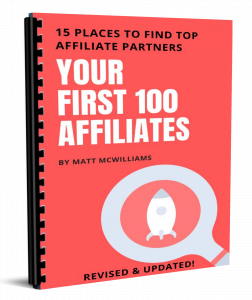 |
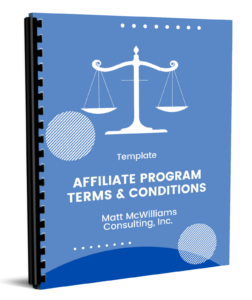 |
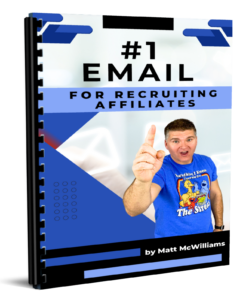 |
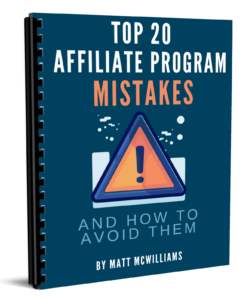 |
 |
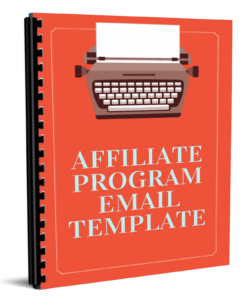 |
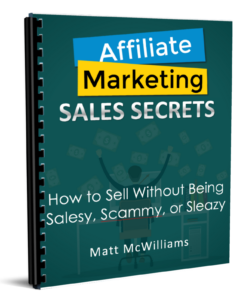 |
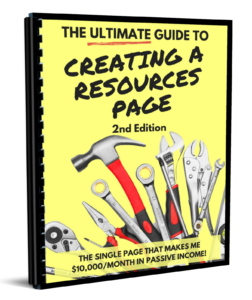 |
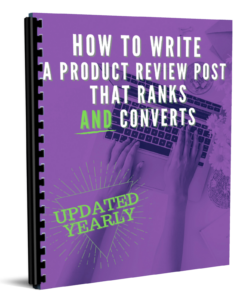 |
